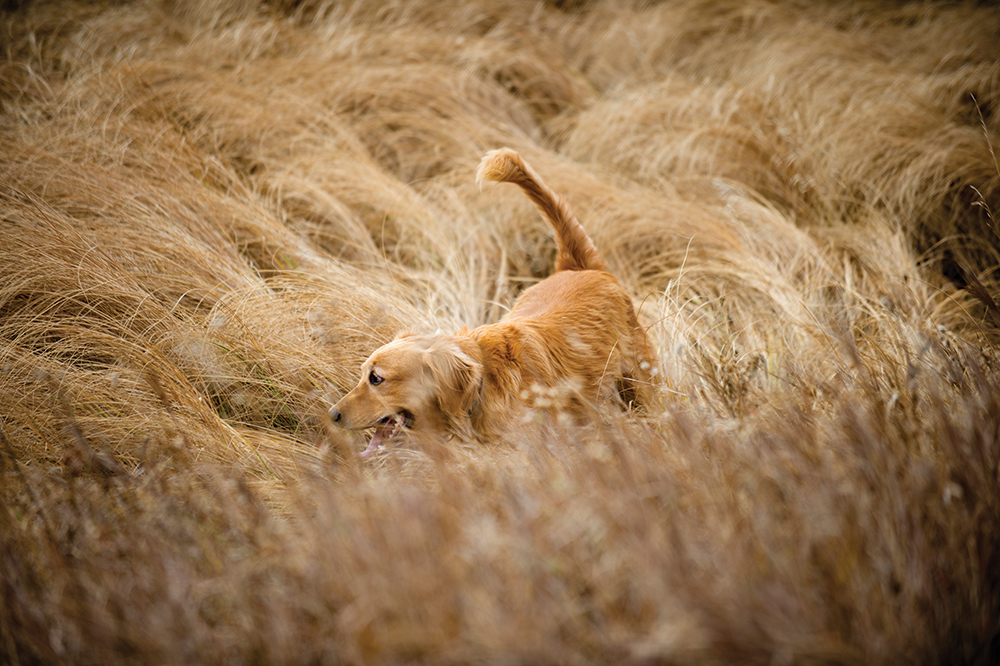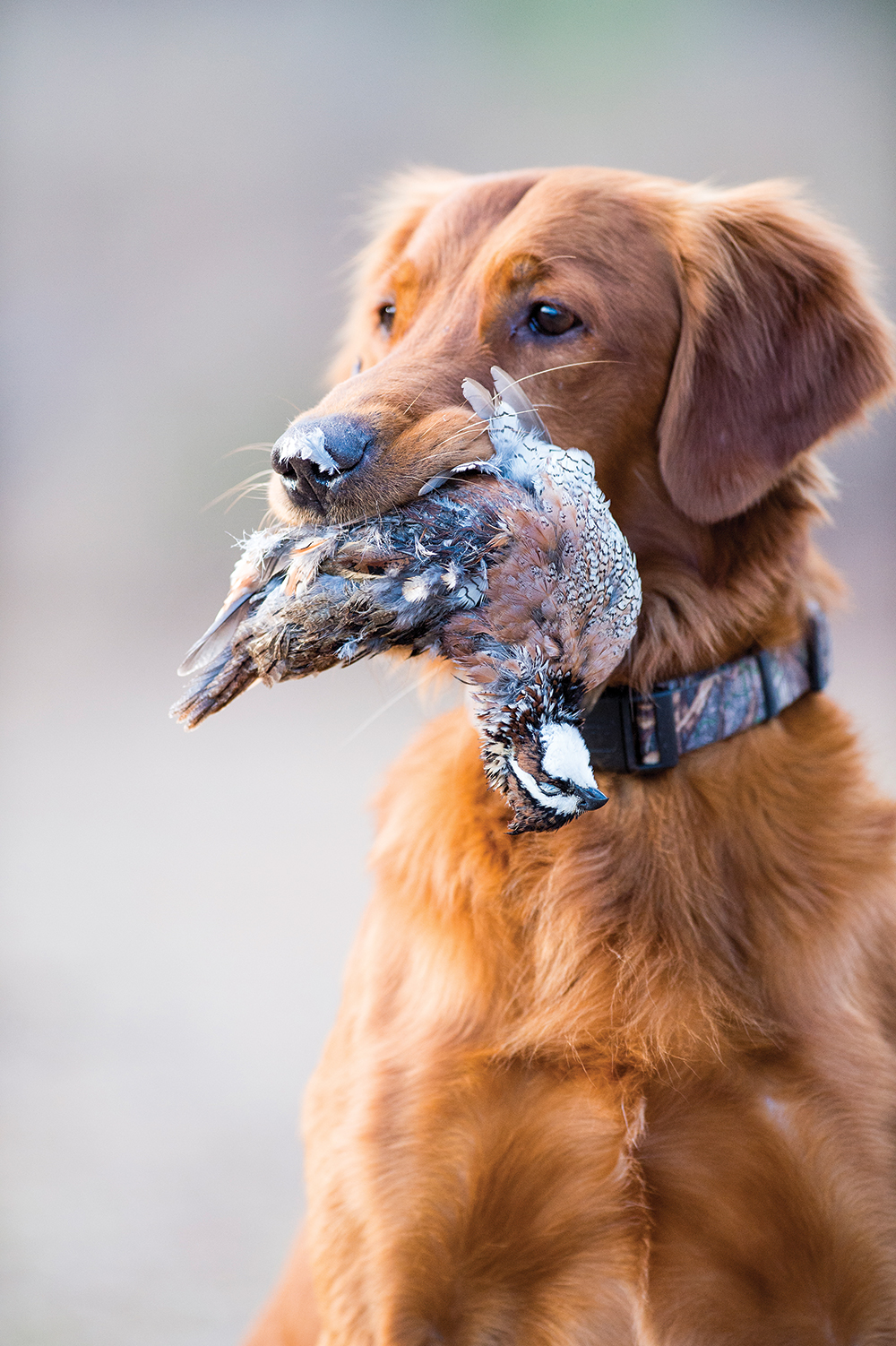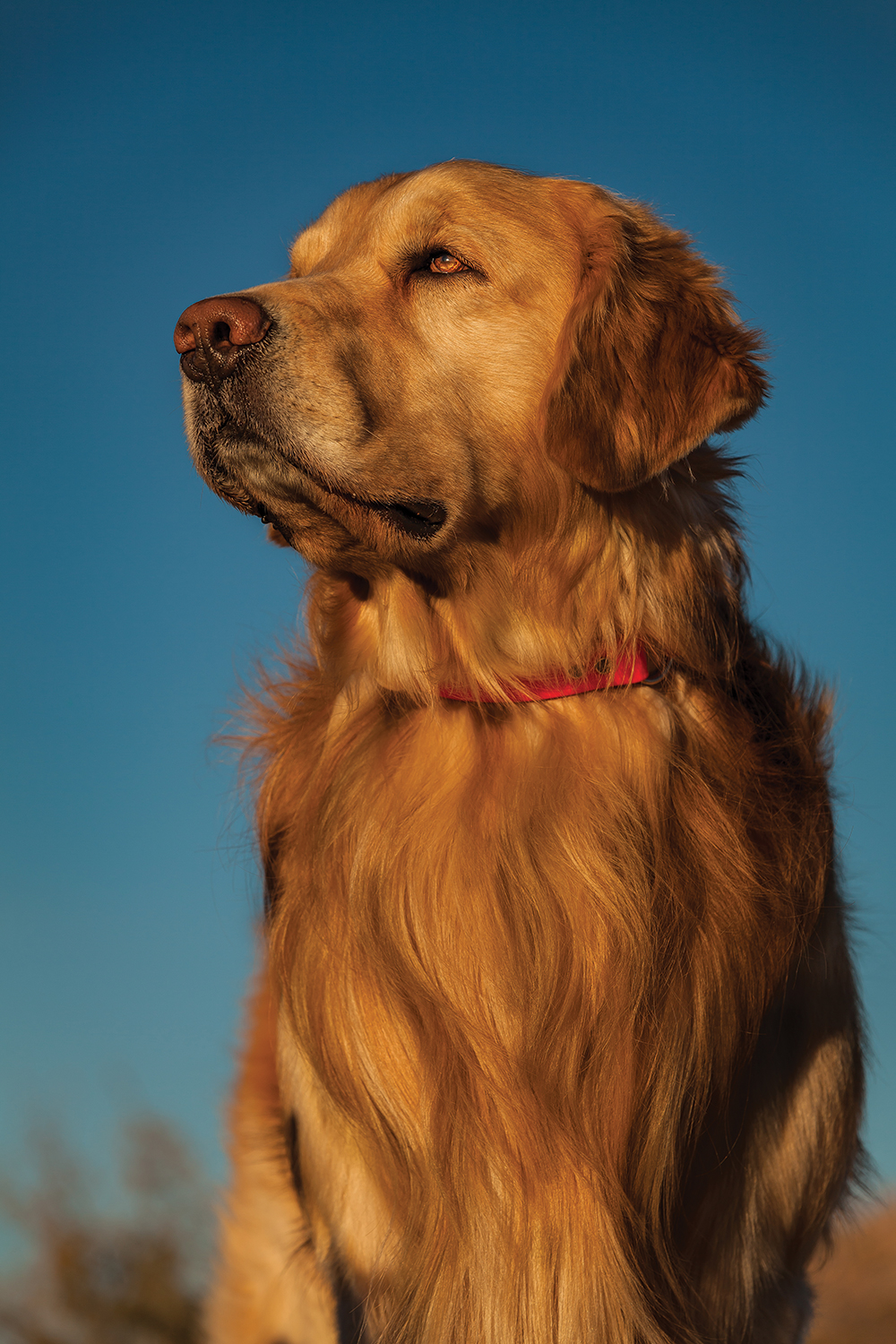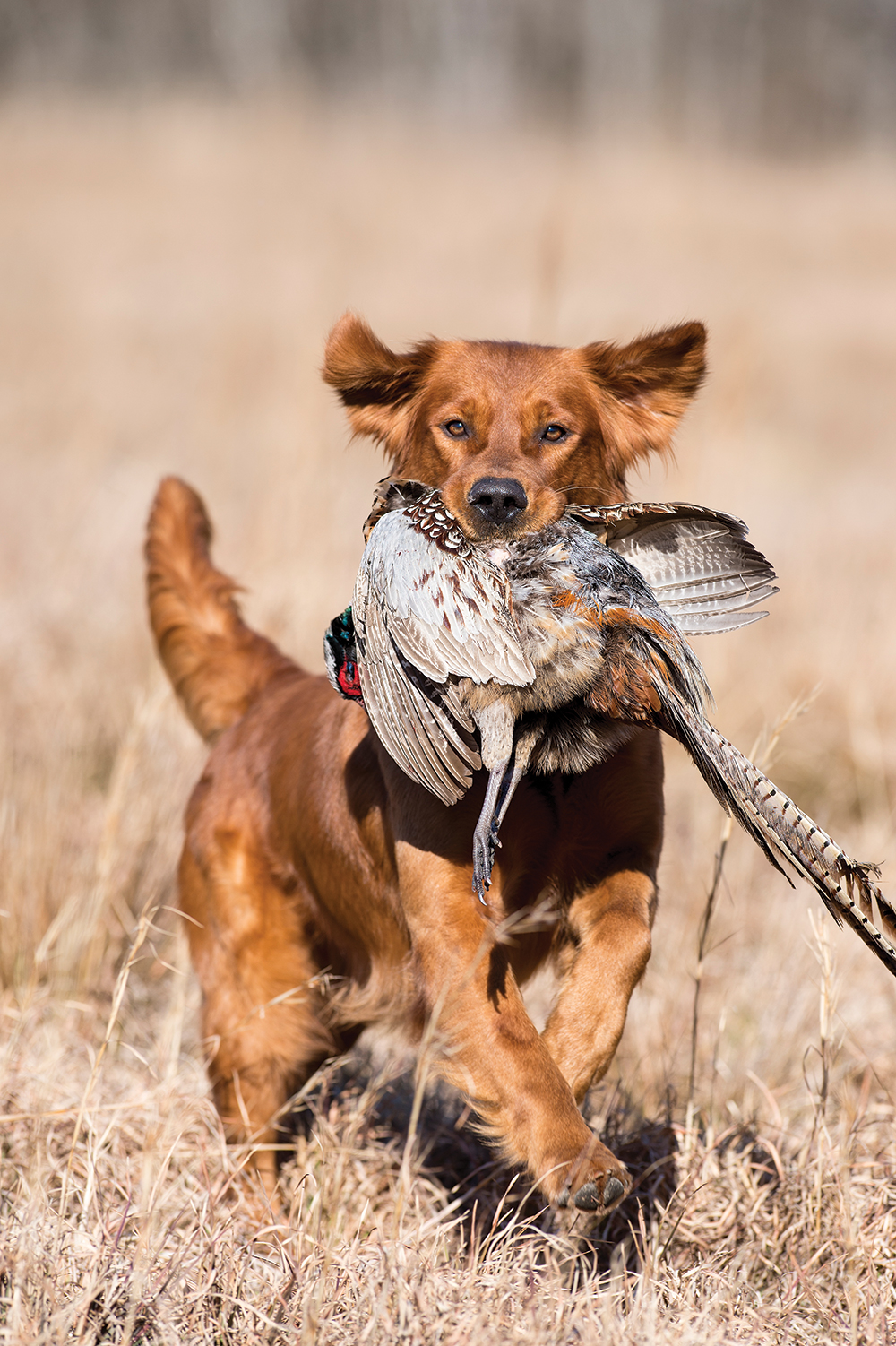GOLD FLUSHES

The scenting ability of golden retrievers has been called the best among retriever breeds so often that the term “golden nose” was coined to champion their gift. Golden owner and breeder Phil Warren vouches for the breed’s excellent nose.
“I was running two goldens in South Dakota a few years ago through some nasty tangles and cattails near an abandoned farmstead. The dogs flushed 35 pheasants. I was lucky enough to shoot a double—one of which landed in the open while the other, a cripple, disappeared back in the tangle,” Warren explained. “My golden, Fielder, ran out and quickly retrieved the bird in the field. Then he plunged back into that mass of vegetation, which was three times his height. Somehow he found that cripple in all the dense brush and thick scent, tunneling deep through the tangle. The result was a precious rooster and a proud dog owner.”
Warren is a retired senior regional director for Ducks Unlimited who farms his land in Alstead, New Hampshire, with Belgian draft horses. He and his wife, Janet, have owned 11 goldens since the late 1970s; they currently have 3. The Warrens have had 6 litters with 3 females in the past 34 years, yet Phil says it was a male named Issac that “really sealed our commitment to goldens.” They hunted Issac hard for grouse, pheasants, woodcock, and waterfowl.



“Issac possessed the ‘golden nose’ and lots of drive. On one occasion in Delaware, we were hunting public-draw blinds,” Warren says. “When we got there we found two other hunters with two retrievers and four ducks down on the ice that their dogs would not fetch. I sent Issac and he brought them all back, breaking ice and swimming in each time. Those hunters were impressed! We stayed until dusk and shot snow geese.”
Dog encyclopedias vary greatly in their reports on most breed ancestries. Take the English pointer, for example. One source says it “probably began with the tough and speedy foxhound.” Further investigation suggests lineages from greyhound and bloodhound. Another source throws in setter and bulldog. By contrast, goldens have a simple story. They were developed in the late 1800s by Scottish Lord Tweedmouth (Sir Dudley Marjoribanks), who wanted to develop a retrieving dog suited to the Scottish climate and terrain. He started with a dog named Nous, the only yellow pup in a litter of black, wavy-coated retrievers. Nous was bred to Belle, a Tweed water spaniel, and their offspring (subsequently mixed with other varieties of flat and wavy-coated retrievers) became the breed’s foundation.

Originally shown under the name “Golden Flat Coat,” the breed was officially registered as Golden Retriever in 1925 with the American Kennel Club and in 1956 with the United Kennel Club. They have been listed as the third most popular breed in the U.S., fifth most popular in Australia, and eighth most popular in the United Kingdom.
Golden retriever males should run 65 to 75 pounds; females weigh in at 55 to 65. Goldens should have a broad but not angular skull with a well-defined stop and strong muzzle. To properly insulate the skin from rain and snow, their coat should be dense, but it can be straight or wavy. The feathering on the front of the neck, the backs of the legs, and undersides of the tails should be moderate to heavy. On the head, paws, and front of the legs, the coat should be short. Coat colors run a spectrum of shades of gold, from very pale to deep reddish. The dogs all shed.
Many hunters trim the feathers (the fur on the underbody, legs, and tail) of their goldens prior to upland bird season. While the main part of the coat should be flat enough to resist picking up every burr and bit of field debris, a golden’s feathers are like Velcro. Under these lush coats, goldens have muscular builds.
“While upland hunting, some goldens will quarter for you and some will cruise until they strike scent,” Phil Warren points out. “They are easy to read when they’re on a bird because their tails wag hard. Of the 11 we’ve owned, some marked very well and others found downed game through sheer determination and nose. With goldens, retrieving is automatic due to their strong instinct and willingness to please you.”



As with so many handsome breeds, lines developed with the show ring in mind have forsaken the breed’s origins as hardworking field and water dogs. Anyone looking to make a golden a hunting partner should be sure the dog comes from a breeder who breeds specifically for hunting.
Because of their exuberant, tail-wagging friendliness, many people don’t realize that well-bred sporting goldens are not only excellent trackers on land or water, but also excel at bomb-sniffing and search-and-rescue duty. They are biddable and rugged, although by comparison some may be softer than Labrador retrievers. “For upland grouse and woodcock, I use an easygoing male that hunts close,” Warren continues. “My current oldest female, Zinny, is nicknamed ‘pile driver’ because she is relentless. She is best on western pheasants and sharptails.”
Warren suggests that prospective golden owners should discuss temperament with breeders. “Tell them what you want for temperament and they can narrow the selection process for you,” he recommends. “I told a breeder I didn’t want the top alpha female in the litter, but one with some zip. She sold the top female to a field-trial person and offered me the pick of two females. It worked out perfectly.”
The scenting ability of golden retrievers has been called the best among retriever breeds so often that the term “golden nose” was coined to champion their gift.
























